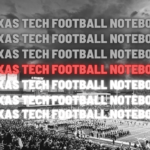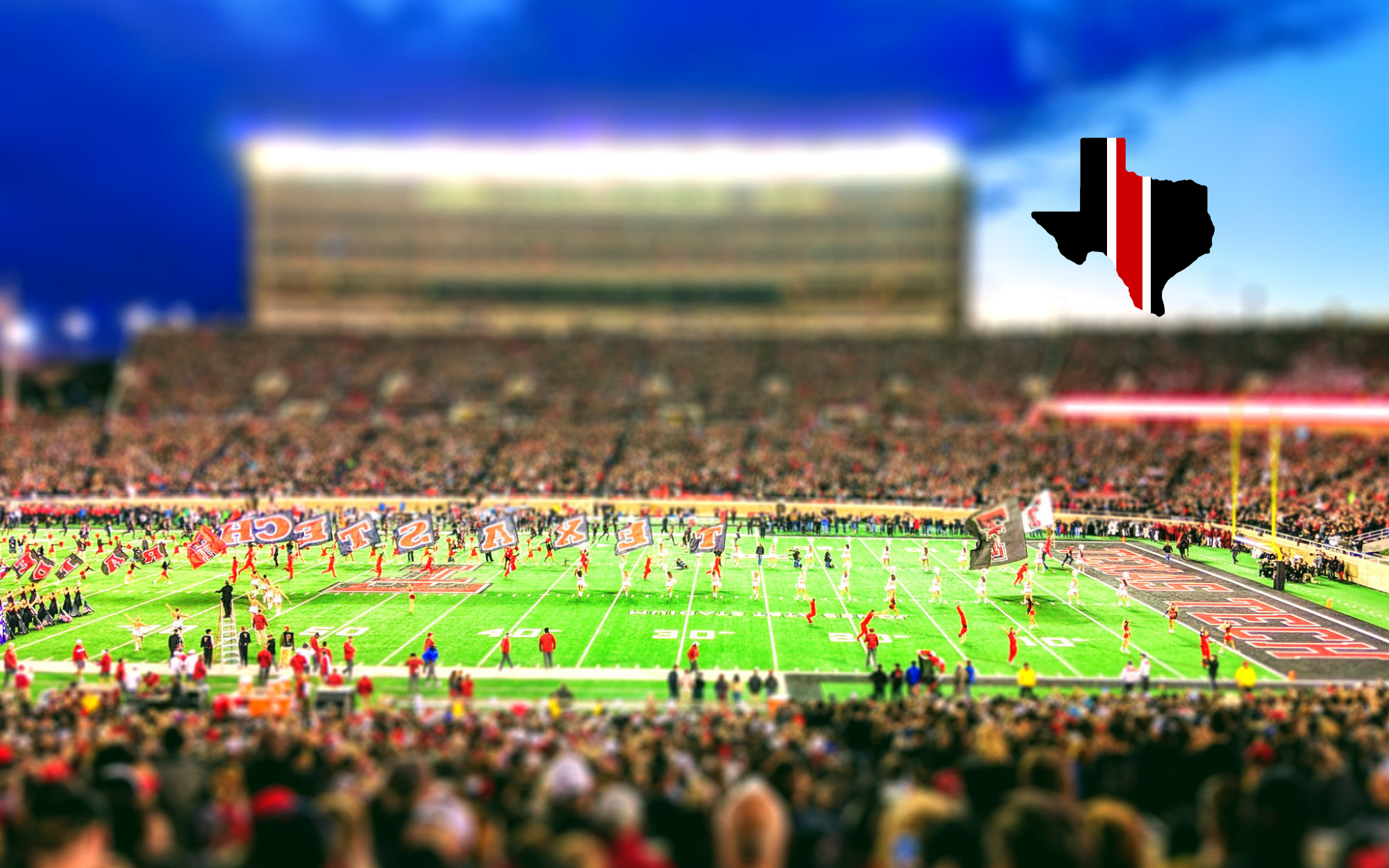There’s just so much to write about, but I focused on three things, head coach Matt Wells press conference, the surprise commitments (they were a surprise to me), and crunching some scholarship numbers and considering how big of trouble each position group is in (I think everything is going to be okay).
Presser
Head coach Matt Wells opened his press conference by talking about each one of the six signees from yesterday. He definitely talked about the character and parent(s) for each of the players and I find that interesting. Other items.
- Wells had a huge focus on special teams and he’s right, there was only 1 kicker and 1 punter on the roster, so Wells and special teams coach Joe Lorig had to sign some special teams options because there were none. Discussed Austin McNamara and Jon Garibay.
- With Tony Bradford, Jr. talked about being a state champion and a great motor, high character, and great mom. Wells really focused on how he’s a great leader, a huge reason why they won the state championship and a great mom. Focused on how Bradford stayed committed throughout the process and Aaron Donald is who Bradford wants to play like.
- Dadrion Taylor, Wells focused on how Taylor is a big basketball player and how he felt like Texas Tech needed to update the athleticism at defensive back.
- Cole Thomas is long and lean at tackle, talked about his athletism and add weight.
- Quintin Williams is long and lean, is a Raider for now, but may end up with his hand down. I totally agree with this statement (see below). Said that he was just under-developed and could play multiple spots depending on how his body develops. Getting his offer, very good behind the scene moment, life wasn’t perfect and school wasn’t perfect and has a lot of respect for him and will play with a chip on his shoulder.
- Talked about the 3,200 feet above sea level that Lubbock sits at, which is funny that I sort of take for granted knowing about.
- Wells said that he wants to “major” in recruiting the state of Texas and want to “minor” in recruiting in Oklahoma, JUCO, and from out of state as well. The main focus is in Texas.
- Excited about McLane Mannix, knew Mannix’s stats right off the top of his head, at least the number of catches that he had. Said that Mannix works his tail off, saw him on a lot of cross-tape (which I think when they watched opponents, he showed up quite a bit).
- Defensive backs, wideouts and maybe a couple of more skill guys is what the staff is looking to add.
- This signing class is a huge focus on leadership and high character, leaders in the school, and many were multi-sport players. Can help with player accountability.
- Have moved on to 2020, 2021, and 2022. Really start establishing relationships for the 2020 class now. You can really judge a class 3 years ago. How a team adds transfers and grad transfers is how you judge the class.
- Didn’t want to dip below a certain level of players.
- Ended the press conference with a question about the 2020 class, didn’t want to reach and have a signing day victory, want Big 12 caliber players or will develop into Big 12 caliber players. Didn’t want to dip below that line and evaluating the 2020 players, in terms of basketball games. The staff would go watch on Tuesday and Friday to see the multi-sport athletes and establish relationships with high school coaches.
With Signing Day now complete, join @TTUCoachWells as he breaks down our newest group of Red Raiders!
#WreckEm | #19Guns
pic.twitter.com/6CZoQ4nUDE
— Texas Tech Football (@TexasTechFB) February 7, 2019
I won’t have time to break down the coordinators today but will do so tomorrow morning (fingers crossed).
Surprise Commits
DE Quintin Williams (6-6/230) (Clear Lake; Houston, TX): I was genuinely surprised when Quintin Williams committed. I didn’t know anything about him prior to yesterday, but he’s a 6-6/230 athlete that played all over the field for Clear Lake, from middle linebacker to receiver, just whatever. When I looked at his 24/7 page he didn’t have any offers (there are offers listed there now, but I promise yesterday there were none), so the presumption is that grades are an issue, because when you watch his video, he’s an exceptional athlete.
If Williams pans out, he’s going to be 6’6″ and 250-260 and the type of defensive end that you wonder why is never on your team because his closing speed is freakish and you can’t replicate the frame if he’s really 6’6″ and 230 then that’s just the base.
RB Alante Brown (5-11/165) (Simeon; Chicago, IL): Brown had legitimate scholarship offers from Florida State and Florida Atlantic, with two handfuls of other offers, but things appeared to be down to Texas Tech and the two Florida programs. According to his 24/7 profile, Brown is a 4-star player and I was again surprised that Brown chose Texas Tech. You just don’t see players from Chicago choose the Red Raiders very often.
Brown played quarterback and running backs coach Deandre Smith tweeted out his commitment, so I’m presuming that Brown will play running back at Texas Tech. Like a lot of you, I was a bit confused when Dadrion Taylor, the Oklahoma player of the year committed to Texas Tech, but apparently did so as a defensive back. It made sense to leave him at running back considering those numbers, but Brown I presume let the coaches know that he was committing to the good guys so this made more sense after the fact. Watching Brown’s video, he’s terrific with the ball in his hands and he absolutely fits the profile of what Yost and Smith want in a running back. He’s fast and has terrific change of direction in traffic, that’s exactly what I think they want.
Scholarship Numbers
I wasn’t sure how to quantify this, so I tried to do a couple of things. I updated my scholarship charts to include the new signees and then I updated the Scholarship Eligibility Quotient. I created a single page where they are all located, you know, for posterity sakes. If there are any errors, let me know and I’ll get this page updated.
To catch you up, the Scholarship Eligibility Quotient is the number of actual scholarship years available over the number of players. For example, there are 17 scholarship offensive linemen and 47 scholarship years available (this does not include the redshirt years), and the Scholarship Eligibility Quotient is 2.76. That’s a pretty solid number and it represents a few things: 1) If the number was closer to 4, then that would mean that there was no experience returning; 2) If the number was closer to 1, then that would mean that there are no younger players in the ranks to replace the graduating players; and 3) Generally speaking, a number in the range of 2.7 to 2.9 is a pretty good indication that there’s lots of youth and experience.
If we continue with the offensive line, there are 4 seniors, 3 juniors, 3 sophomores, 5 redshirt freshmen, and 2 true freshmen. This is a position group that’s pretty well settled for a few years.
The other thing that I wanted to take a look at was the scholarship players available over the number of positions, which I hoped would give you all an idea as to a number of players available for the spots at each position group. This is a bit tricky because I would think that some of the players that are in the defensive line group may end up playing an outside linebacker spot. My problem is that the coaches have not said where certain players will play, especially on defense.
The idea with this number is that you get a sense as to the player pool available to each position. The higher the number, the more options there are, the lower the number, the fewer players available for each position group.
| Eligibility Quotient | Positions | Scholarship Players | SP/Position Ratio | |
|---|---|---|---|---|
| Defensive Back | 2.18 | 5 | 12 | 2.40 |
| Defensive Line | 2.38 | 3 | 15 | 5.00 |
| Linebackers | 2.75 | 3 | 9 | 3.00 |
| Tight End | 2.33 | 1 | 3 | 3.00 |
| Offensive Line | 2.76 | 5 | 17 | 3.40 |
| Receivers | 3.18 | 3 | 9 | 3.00 |
| Quarterback | 2.6 | 1 | 5 | 5.00 |
| Running Back | 3.25 | 1 | 4 | 4.00 |
Obviously, the big issues here are the defensive backs, only 12 scholarship players for 5 positions. Yes, there is a good chance that the 5th defensive back could be a linebacker, but that’s not exactly a deep pool.
For the 2020 class and beyond, there are 4 senior defensive backs and the problem is that this is 1/3 of the scholarship players available. That means that there are only 8 scholarship players who will be available after the 2019 season. That’s a bit problematic, but the good news is that there’s a pretty strong core of sophomores that should see a ton of time this year including transfer Adam Beck.
If I’m concerned about a particular position, it is probably the ones that the coaches have already identified, which is defensive back, receivers and possibly linebackers, although this is less of a concern than defensive back and receivers.
Personally, I think that the recruiting cycle will be okay with the current group, but the 2020 class will have to be on-point and will probably need to include JUCO players for defensive backs, linebackers, and receivers. I personally think that with continued recruiting at the other positions, everything should be fine if the reboot truly starts in 2020. The key, of course, is that the 2018 class has to out-perform expectations.
I’d also add one other note, which is that if you add up the number of scholarships in the table above it is 74 and as you all know, each team is allowed to have 85 scholarship players. So, Texas Tech has 11 scholarships to play with for transfers and other late signees. I know that the JUCO market can somewhat open up after the spring as players become eligible to go if certain classes get done. Texas Tech isn’t even close to meeting the scholarship limit. And for the record, this is an unofficial count and could be off, but we won’t know for certain. For example, I have San Diego State transfer Mark Brown as a scholarship player, but I’m not sure if he was granted a scholarship when he arrived.










